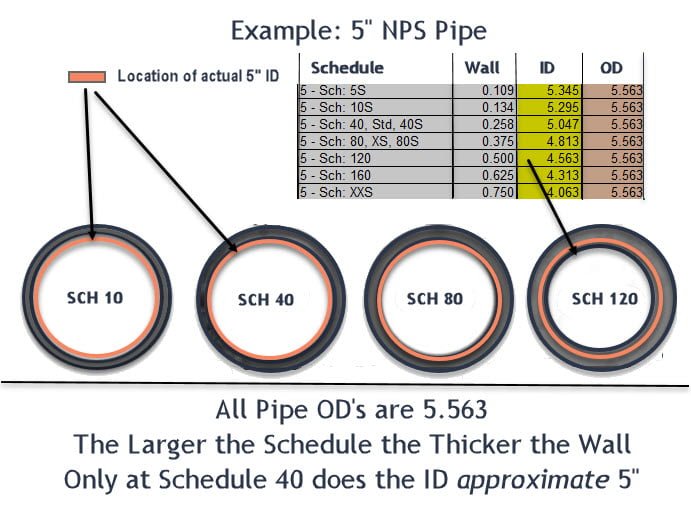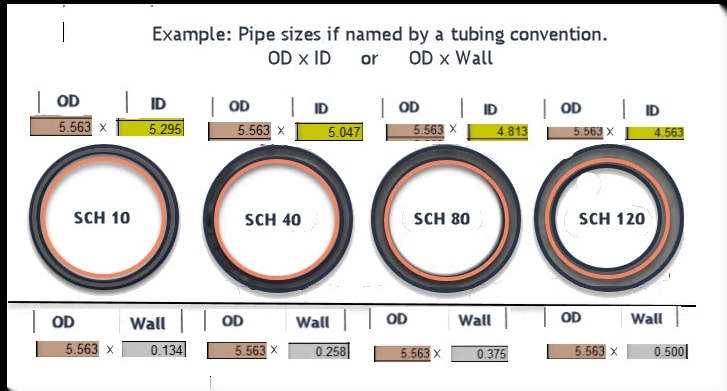Is it a Pipe or a Tube?
We get this question all the time, and sadly it usually comes when a customer orders “pipe” when what they really want is “tubing.” What is the difference between pipe and tubing? To put it simply, all pipe is tubing, but not all tubing is pipe. That probably didn’t help, but in some instances, the terms are interchangeable but only in some instances.
Tubing is defined by its Outside Diameter and Wall Thickness. The ID is a derivative of the OD and wall. And the OD is a real dimension. For example, 5” Tubing has a 5” OD. (See Below). The red arrow measures the 5″ OD and the black arrow measures the ID.


In simple terms, there is nothing particularly 5” in 5” pipe! It hovers around 5”, and so it is really only 5” by name. Therefore, it is called using the Nominal Pipe Size (NPS) standard that specifies its OD and schedule number (wall thickness). And to confuse you even more, each pipe size has its own unique wall thicknesses. If pipe were to be named by a tubing convention (and of course, since all tubing is pipe it can!) then we would have this. Below we see two tubing conventions. 1) Tube OD x Tube ID and 2) Tube OD and Wall Thickness.

So, here is the rub, if you mistakingly order 5″ Pipe, but what you really want is 5″ tubing, you’re up the creek. Again, look at the figures above and you’ll see that the red circle is the 5″ mark. Your “Pipe” will arrive too small.
So, why this confusion? It is because pipe is ancient. I was recently at a Pompey exhibit and saw some copper pipe in its artifacts. I was really amazed at how modern it looked. It had flanges for bolting and the quality of OD and wall was remarkably good.

The Egyptians are credited with making the first metal pipe from copper around 3000 BC. The Chinese used bamboo pipe millennia ago to transport gas. Greeks used fired clay, stone, and bronze. As pipe evolved so did its material composition and its usage.
Jumping to the 19th-century steam-engine locomotives used pipe, but at tremendous pressures. By now, pipe OD was somewhat standardized, so the only way to increase pressure was to increase the wall. Here we have the beginning of schedules. This is the quick story.
So here are some tips for ordering.
Classification: Pipe
The classifications of pipes are schedule and nominal diameter. Pipe is typically ordered using the Nominal Pipe Size (NPS) standard and by specifying a nominal diameter (pipe size) and schedule number (wall thickness). The schedule number can be the same on different size pipe but the actual wall thickness will be different.
Classification: Tubing
Tubing is used in structural or medical applications so the outside diameter becomes the important dimension. Tubing is typically ordered to outside diameter and wall thickness; however, it may also be ordered as Outside Diameter and Wall Thickness. Also, tubing is usually ordered and held to tighter and more stringent tolerances and specifications than pipe. Ours certainly is!

